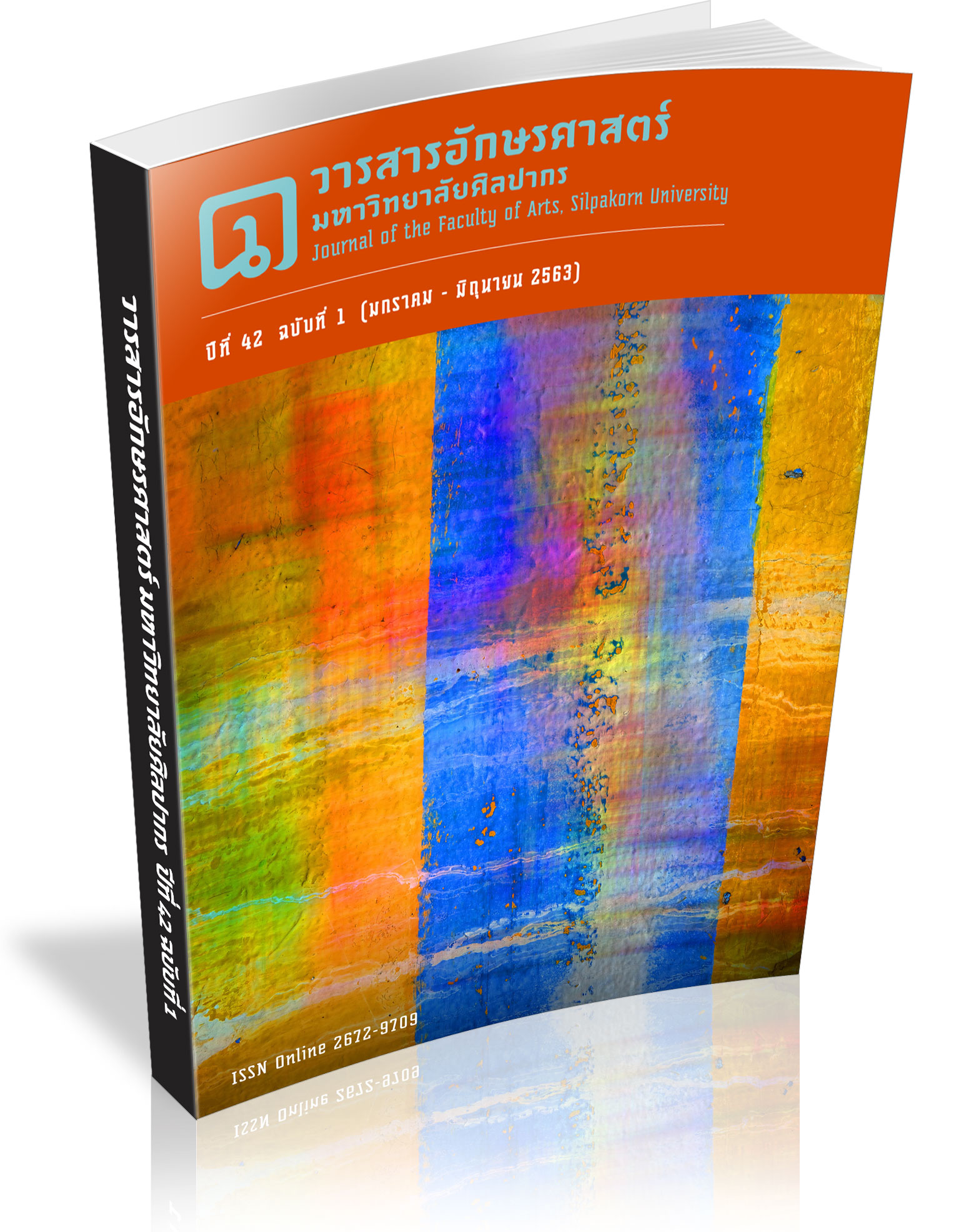The Establishment of State Secular Power in the Buddhist Church of the Royal Court of Siam through the Ecclesiastical Titles between B.E. 2325-2445
Keywords:
Ecclesiastical title, High monk, Royal Court of Siam, Buddhist churchAbstract
This paper aims at studying the establishment of the state secular power in the Buddhist Church of the royal court of Siam through the ecclesiastical titles between B.E.2325-2445. The study found that the Royal Court of Siam was successful in tightening its grip on power by managing Buddhist affairs to act as connection between the Royal Court and the Buddhist Church. Buddhist monks had to constantly change throughout the early Rattanakosin period, resulting from the ideals of the Royal Court of Siam, in closely supervising Buddhist affairs so that they would become a part of state building. The Royal Court of Siam in the reign of King Rama I adopted the giving of ecclesiastical titles to the monks to build a political network in the Buddhist Church. The Supreme Patriarch and the high monks were the monks of the kingdom who aided the activities of the Royal Court. Later, in the reigns of King Rama IV and King Rama V, the Royal Court gave the highest ecclesiastical titles to the ordained members of the royal family in order to regulate the administration of the monks. The Royal Court of Siam was, therefore, able to successfully maintain the state secular power in the Buddhist Church resulting in the proclamation of the Sangha Law in B.E. 2445 of the Royal Court of Siam, regarded as a cumulative effect of the changing process continuously implemented by the Royal Court, and its success to centralize the ecclesiastical power, as to the political reformation carried out by the Royal Court at the same period.
Downloads
References
Annals of Rattanakosin, No.5. (1782). Bangkok. King Rama I. National Library (primary source)
Annals of Rattanakosin, No.1. (1809). Bangkok. King Rama II. National Library (primary source)
Buddhism and Sangha in Thai Society. (2006). Bangkok: Samlada. (In Thai)
Chantornwong, S. (2004). Commentary on political literature and history. Bangkok: Kobfai. (In Thai)
Choungsakul, S. (1986). Changes of the Sangha: A Case Study of Dhammyuttika (18251921). Master Thesis, M.A. in History, Gradate School, Chulalongkorn University. (In Thai)
Damrongrajanubhab. Prince. (2003). Royal Chronicle of Rattanakosin in the Reign of King Rama II. Bangkok: Department of Fine Art. (In Thai)
Dhaniniwat, Prince. (1982). The Restoration of Cultural under King Rama I. Bangkok: Ministry of Education. (In Thai)
Document of Management of Buddhist and Educations in the Period of King Rama V. No.37. (1901), National archives (primary source)
Eoseewong, N. (2002). Pen and Sail: Literature and History in Early Bangkok. 4th ed. Bangkok: Fah Deaw Kan. (In Thai)
Ishii, Y. (1986). Sangha, State, and Society: Thai Buddhism in History, translated by Peter Hawkes. Honolulu: University of Hawaii Press.
Ling, T. (1979). Buddhism, Imperialism and War: Burma and Thailand in Modern History. G. London: Allen & Unwin.
Office of the Royal Society. (2007). The First Thai Enacted law, Version of Office of the Royal Society Vol.1. Bangkok: Office of the Royal Society. (In Thai)
Panthayangkun, Y. et al. (1982). The Royal Decrees, Part 2, the Reign of Rattanakosin Period. Bangkok: The committee for the Consideration and the Publishing of Papers on History, Office of the Prime Minister. (In Thai)
Podchanawilas, Phra. (1902). The Order of Ecclesiastical Titles. Pranakorn: Bumrungnukulkij. (In Thai)
Reynolds, C. J. (1972). The Buddhist Monkhood in Nineteenth Century Thailand. Doctoral Dissertation, Cornell University.
Royal Decrees, No.8. (1834). Bangkok. King Rama III. National Library (primary source)
Royal Interrogate of Rattanakosin in the Reign of King Rama I to King Rama V. (1970). Bangkok: Kurusapa. (In Thai)
Sommut Amornpantu, Prince. (2002). High monks of Rattanakosin Vol.1. Bangkok: Department of Fine Art. (In Thai)
Tambiah, S. J. (1976). World Conqueror and World Renouncer: A Study of Buddhism and Polity in Thailand against a historical background. Cambridge: Cambridge University Press.
Teerawatana, N. (1982). Political initiative of King Mongkut. Master Thesis, M.A. in History, Chulalongkorn University. (In Thai)
The Emerald Buddha: Mythological Accounts and Historical Interpretation. (2003). Bangkok: Matichon. (In Thai)
The Government Gazette of King Chulalongkorn, Vol.1-5. (1997). Bangkok: Tonchabab. (In Thai)
The Government Gazette of King Chulalongkorn, Vol.1-2. (1999). Bangkok: N.P. (In Thai)
Thipakornrawong, ChaoPhya. (1983). Royal Chronicle of Rattanakosin in the Reign of King Rama I. Bangkok: Kurusapa. (In Thai)
Thipakornrawong, ChaoPhya. (2017). Royal Chronicle of Rattanakosin in the Reign of King Rama III. Bangkok: Thai Quality Book 2006. (In Thai)
Wannaratana, S. (1982). Buddhism and Political Concepts during the Reign of King Rama I (17821819). Master Thesis, M.A. in History, Gradate School, Chulalongkorn University. (In Thai)
Wenk, K. (1986). The Restoration of Thailand under Rama I, 17821809, translated from the German by Greeley Stahl. Tucson: University of Arizona Press.
Downloads
Published
How to Cite
Issue
Section
License
ผู้เขียนบทความต้องยินยอมในข้อกำหนดต่าง ๆ ของวารสารก่อนส่งบทความตีพิมพ์




